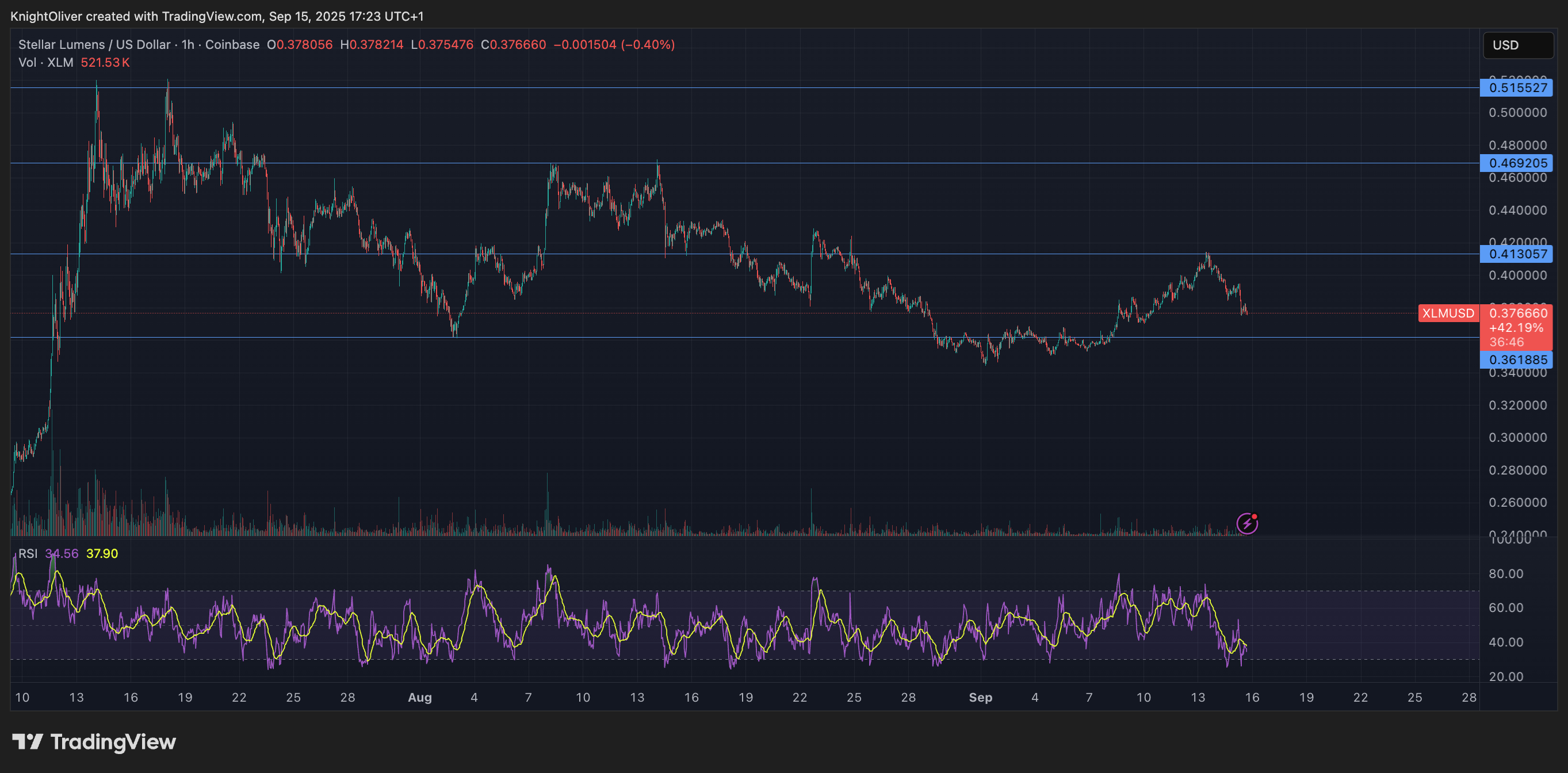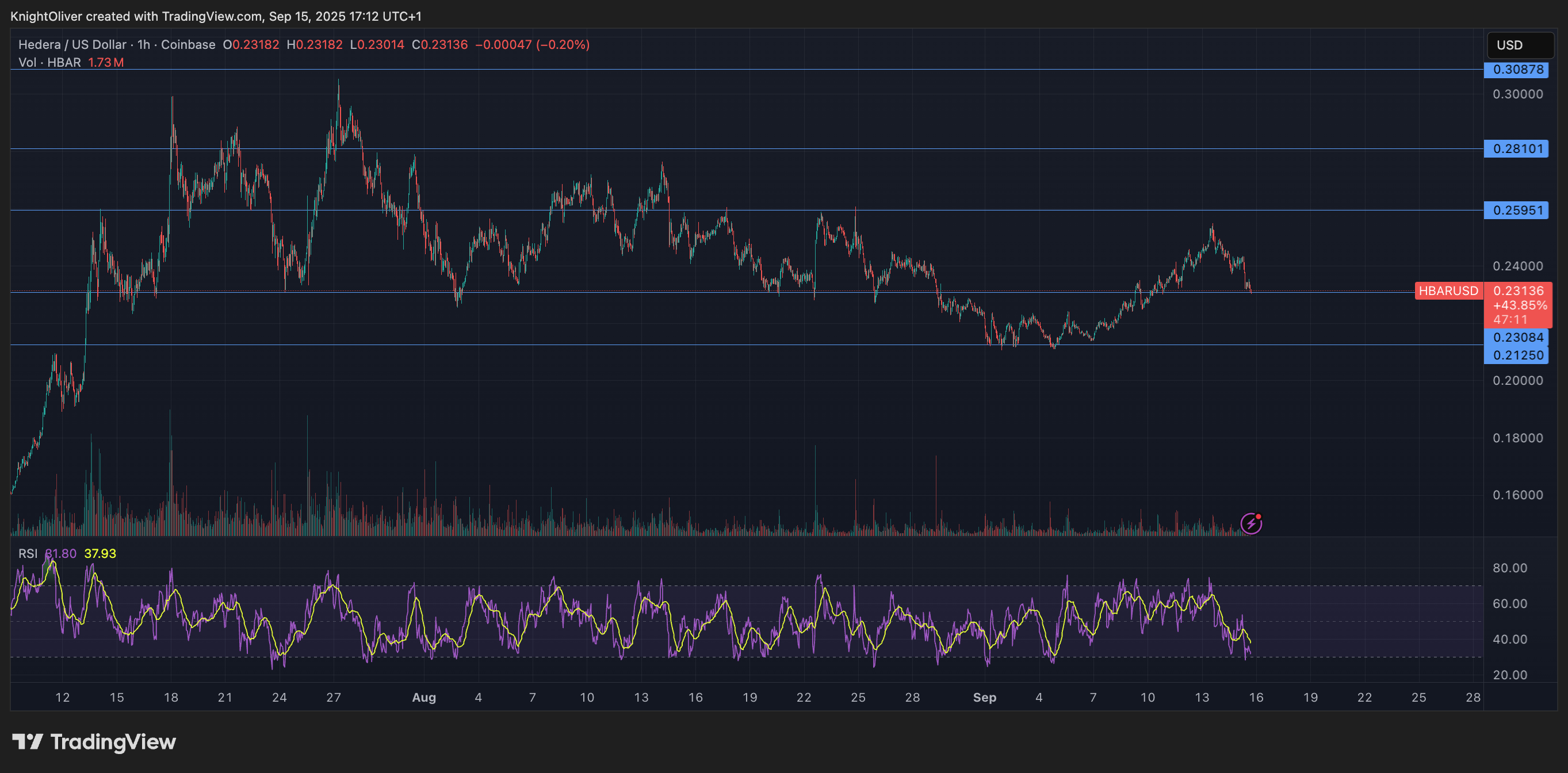Uncategorized
CFTC’s Pham Said to Plot Exit, Agency May Be Left Without a Party Majority

Caroline Pham, the acting chairman of the U.S. Commodity Futures and Trading Commission, has openly discussed an intention to leave the commission once she’s permanently replaced, people familiar with her plans have said, leaving significant questions about the future track of agency policy.
If President Donald Trump’s nominee for the chairmanship, former Commissioner Brian Quintenz, is confirmed by the Senate to take the job, the departure of Republican Pham could coincide with the planned exit of fellow Republican Commissioner Summer Mersinger to run the Blockchain Association.
Who’s left? The new Republican chairman — who served as a policy head for a16z after leaving the agency — would find himself alongside a single fellow commissioner: Democrat Kristin Johnson.
This leaves Quintenz with practical control of the agency’s agenda and staffing, because almost all of its employees will report to his office. But the CFTC could be hamstrung to make new policy as Congress is working on legislation that could assign the regulator new powers over the crypto industry. The longer it waits before the White House picks nominees to face Senate confirmation, the longer the potential delay of higher-stakes policy work that requires commission involvement.
The CFTC normally has five members — a chair and two others from the majority party plus two commissioners from the minority party. If Quintenz gets the Senate nod, he’s taking over the spot currently held by Christy Goldsmith Romero, a Democrat who said she’s leaving her extended stint in government service when this role ends.
The sole Democrat, Johnson, hasn’t cultivated a reputation for her digital assets views, like the sharper rhetoric associated with the Securities and Exchange Commission’s lone Democrat, Caroline Crenshaw. It’s unclear what common ground, if any, would be carved out between Johnson and Quintenz if they were to serve as a two-person commission.
Mersinger will start as CEO of the crypto lobbying group Blockchain Association at the start of next month, according to board president and chair Marta Belcher’s remarks highlighting the new hire on Wednesday at Consensus 2025 in Toronto, calling her a person who could take crypto «to the next level in policy.»
«This decision is not easy, and it breaks my heart to leave the agency that I have grown to love so much over the last five years,» Mersinger said in a statement. She’ll soon be lobbying on policy that is likely to one day direct her former agency to regulate the spot markets for the bulk of crypto trading in the U.S.
As the interim head of the agency appointed after Trump reclaimed the White House, Pham, a former executive at Citigroup Inc., has taken an aggressive stance to ease the CFTC’s use of enforcement actions to steer crypto matters and to rethink some of its policy positions.
The acting chairman didn’t immediately respond to a request for comment after hours on Wednesday.
Before Pham and Mersinger arrived in a slate of four appointees that also included Democrats Johnson and Romero, the CFTC had been down to two commissioners. The recently departed Chairman Rostin Behnam, a Democrat, had served for a time with Dawn Stump, a Republican.
It’s unclear what the president’s nomination strategy may eventually be for the CFTC’s potential three vacancies if Pham departs, which would include one position for a Democrat. So far, Trump has sought to remove Democratic appointees from federal regulatory agencies, such as at the Federal Trade Commission and the National Credit Union Administration.
Read More: CFTC Commissioner Mersinger to Be CEO at Blockchain Association
Uncategorized
Wall Street Bank Citigroup Sees Ether Falling to $4,300 by Year-End

Wall Street giant Citigroup (C) has launched new ether (ETH) forecasts, calling for $4,300 by year-end, which would be a decline from the current $4,515.
That’s the base case though. The bank’s full assessment is wide enough to drive an army regiment through, with the bull case being $6,400 and the bear case $2,200.
The bank analysts said network activity remains the key driver of ether’s value, but much of the recent growth has been on layer-2s, where value “pass-through” to Ethereum’s base layer is unclear.
Citi assumes just 30% of layer-2 activity contributes to ether’s valuation, putting current prices above its activity-based model, likely due to strong inflows and excitement around tokenization and stablecoins.
A layer 1 network is the base layer, or the underlying infrastructure of a blockchain. Layer 2 refers to a set of off-chain systems or separate blockchains built on top of layer 1s.
Exchange-traded fund (ETF) flows, though smaller than bitcoin’s (BTC), have a bigger price impact per dollar, but Citi expects them to remain limited given ether’s smaller market cap and lower visibility with new investors.
Macro factors are seen adding only modest support. With equities already near the bank’s S&P 500 6,600 target, the analysts do not expect major upside from risk assets.
Read more: Ether Bigger Beneficiary of Digital Asset Treasuries Than Bitcoin or Solana: StanChart
Uncategorized
XLM Sees Heavy Volatility as Institutional Selling Weighs on Price

Stellar’s XLM token endured sharp swings over the past 24 hours, tumbling 3% as institutional selling pressure dominated order books. The asset declined from $0.39 to $0.38 between September 14 at 15:00 and September 15 at 14:00, with trading volumes peaking at 101.32 million—nearly triple its 24-hour average. The heaviest liquidation struck during the morning hours of September 15, when XLM collapsed from $0.395 to $0.376 within two hours, establishing $0.395 as firm resistance while tentative support formed near $0.375.
Despite the broader downtrend, intraday action highlighted moments of resilience. From 13:15 to 14:14 on September 15, XLM staged a brief recovery, jumping from $0.378 to a session high of $0.383 before closing the hour at $0.380. Trading volume surged above 10 million units during this window, with 3.45 million changing hands in a single minute as bulls attempted to push past resistance. While sellers capped momentum, the consolidation zone around $0.380–$0.381 now represents a potential support base.
Market dynamics suggest distribution patterns consistent with institutional profit-taking. The persistent supply overhead has reinforced resistance at $0.395, where repeated rally attempts have failed, while the emergence of support near $0.375 reflects opportunistic buying during liquidation waves. For traders, the $0.375–$0.395 band has become the key battleground that will define near-term direction.

Technical Indicators
- XLM retreated 3% from $0.39 to $0.38 during the previous 24-hours from 14 September 15:00 to 15 September 14:00.
- Trading volume peaked at 101.32 million during the 08:00 hour, nearly triple the 24-hour average of 24.47 million.
- Strong resistance established around $0.395 level during morning selloff.
- Key support emerged near $0.375 where buying interest materialized.
- Price range of $0.019 representing 5% volatility between peak and trough.
- Recovery attempts reached $0.383 by 13:00 before encountering selling pressure.
- Consolidation pattern formed around $0.380-$0.381 zone suggesting new support level.
Disclaimer: Parts of this article were generated with the assistance from AI tools and reviewed by our editorial team to ensure accuracy and adherence to our standards. For more information, see CoinDesk’s full AI Policy.
Uncategorized
HBAR Tumbles 5% as Institutional Investors Trigger Mass Selloff

Hedera Hashgraph’s HBAR token endured steep losses over a volatile 24-hour window between September 14 and 15, falling 5% from $0.24 to $0.23. The token’s trading range expanded by $0.01 — a move often linked to outsized institutional activity — as heavy corporate selling overwhelmed support levels. The sharpest move came between 07:00 and 08:00 UTC on September 15, when concentrated liquidation drove prices lower after days of resistance around $0.24.
Institutional trading volumes surged during the session, with more than 126 million tokens changing hands on the morning of September 15 — nearly three times the norm for corporate flows. Market participants attributed the spike to portfolio rebalancing by large stakeholders, with enterprise adoption jitters and mounting regulatory scrutiny providing the backdrop for the selloff.
Recovery efforts briefly emerged during the final hour of trading, when corporate buyers tested the $0.24 level before retreating. Between 13:32 and 13:35 UTC, one accumulation push saw 2.47 million tokens deployed in an effort to establish a price floor. Still, buying momentum ultimately faltered, with HBAR settling back into support at $0.23.
The turbulence underscores the token’s vulnerability to institutional distribution events. Analysts point to the failed breakout above $0.24 as confirmation of fresh resistance, with $0.23 now serving as the critical support zone. The surge in volume suggests major corporate participants are repositioning ahead of regulatory shifts, leaving HBAR’s near-term outlook dependent on whether enterprise buyers can mount sustained defenses above key support.

Technical Indicators Summary
- Corporate resistance levels crystallized at $0.24 where institutional selling pressure consistently overwhelmed enterprise buying interest across multiple trading sessions.
- Institutional support structures emerged around $0.23 levels where corporate buying programs have systematically absorbed selling pressure from retail and smaller institutional participants.
- The unprecedented trading volume surge to 126.38 million tokens during the 08:00 morning session reflects enterprise-scale distribution strategies that overwhelmed corporate demand across major trading platforms.
- Subsequent institutional momentum proved unsustainable as systematic selling pressure resumed between 13:37-13:44, driving corporate participants back toward $0.23 support zones with sustained volumes exceeding 1 million tokens, indicating ongoing institutional distribution.
- Final trading periods exhibited diminishing corporate activity with zero recorded volume between 13:13-14:14, suggesting institutional participants adopted defensive positioning strategies as HBAR consolidated at $0.23 amid enterprise uncertainty.
Disclaimer: Parts of this article were generated with the assistance from AI tools and reviewed by our editorial team to ensure accuracy and adherence to our standards. For more information, see CoinDesk’s full AI Policy.
-

 Business11 месяцев ago
Business11 месяцев ago3 Ways to make your business presentation more relatable
-

 Fashion11 месяцев ago
Fashion11 месяцев agoAccording to Dior Couture, this taboo fashion accessory is back
-

 Entertainment11 месяцев ago
Entertainment11 месяцев ago10 Artists who retired from music and made a comeback
-

 Entertainment11 месяцев ago
Entertainment11 месяцев ago\’Better Call Saul\’ has been renewed for a fourth season
-

 Entertainment11 месяцев ago
Entertainment11 месяцев agoNew Season 8 Walking Dead trailer flashes forward in time
-

 Business11 месяцев ago
Business11 месяцев ago15 Habits that could be hurting your business relationships
-

 Entertainment11 месяцев ago
Entertainment11 месяцев agoMeet Superman\’s grandfather in new trailer for Krypton
-

 Entertainment11 месяцев ago
Entertainment11 месяцев agoDisney\’s live-action Aladdin finally finds its stars





